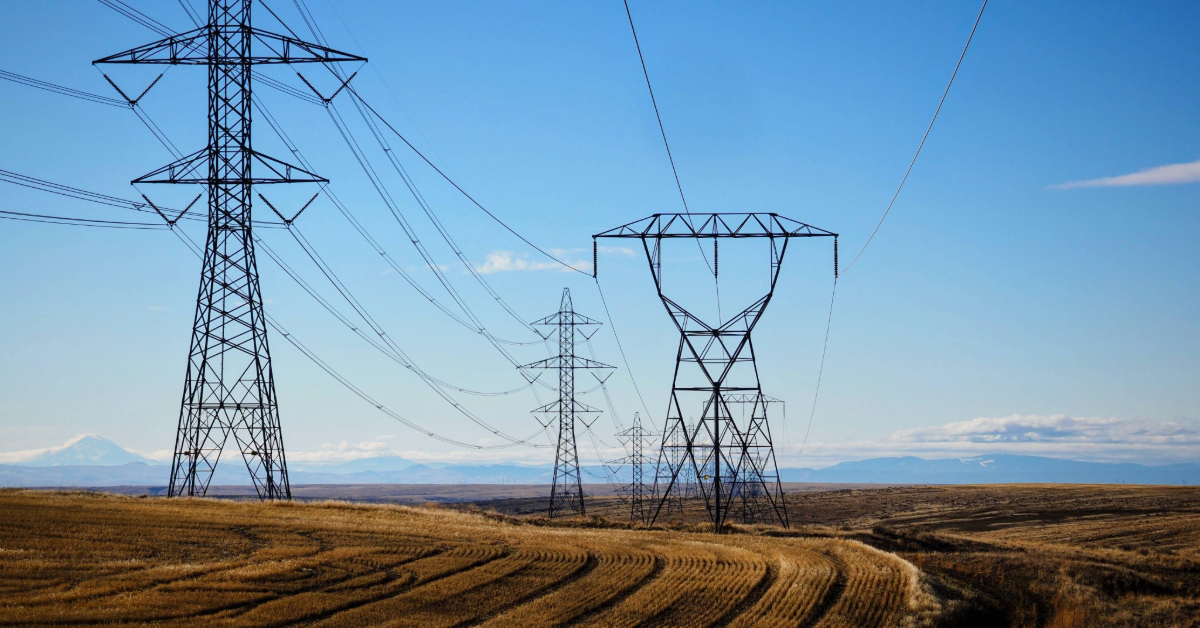How Digital Modeling Solutions can Improve the Asset Siting Process
As energy market participants work to keep up with an ever-increasing demand for electricity, asset siting — or the strategic placement of power...
4 min read
 Team Energy Exemplar
:
July 2, 2024
Team Energy Exemplar
:
July 2, 2024

The U.S. electric grid and transmission infrastructure are both aging and challenged in their ability to meet future loads. Yet demand continues to grow, driven by the electrification and decarbonization efforts needed to achieve a net-zero emission economy by 2050.
To meet future demand, grid operators, utilities and other stakeholders are increasingly integrating renewable energy generators and other distributed energy resource (DER) technologies. Texas, for example, is one of the top producers and consumers of renewable energy. According to a recent study, the state generated more renewable energy in 2022 than any other — nearly 55% more than second-place California. With 2.09 GW that same year, Texas ranked second for battery storage capacity. Additionally, the Electric Reliability Council of Texas (ERCOT), the state’s primary grid operator, is piloting virtual power plants and the use of smaller DERs to meet increased loads and avoid extended outages like those experienced in the wake of 2021’s Winter Storm Uri.
But ensuring that electricity supply meets demand isn’t simply a matter of adding new generation resources. It’s critical that the power generated from these resources be delivered to the loads demanding it — and that means that transmission congestion must be considered when designing the grid of the future.
Congestion occurs when the grid lacks sufficient transmission capacity to support the power flows demanded by market participants. Because constrained transmission capacity can prevent the most cost-effective generation sources from serving demand, operators may be forced to use more expensive or less efficient generation options, which can drive up costs. It can also lead to reliability issues and the curtailment of renewable energy resources, inhibiting the energy transition.
Locations that may be limited in their ability to move power from one place on the grid to another can be identified through the analysis of transmission congestion patterns — helping stakeholders understand how much congestion there is, what’s contributing to or reducing that congestion and what the market and system reliability impacts of that constrained infrastructure are. Collectively, these data points are known as the helpers and harmers, or causes and mitigations, of congestion.
Modern transmission congestion analysis tools, like Energy Exemplar’s PLEXOS, simulate both market behaviors and grid physics, combining the way resources behave in the power markets with the physical constraints relevant to bulk power flows in easily understood visualizations. Essentially a digital twin, these solutions create a sandbox in which market participants can test scenarios to understand when, where and why congestion might occur.
As a result, users gain visibility into the potential impact of congestion on market economics and grid reliability, as well as its impact on decarbonization efforts. These tools make it easier and faster to draw conclusions, helping grid planners discover the insights they need to solve increasingly complex problems.
Here are the primary ways in which grid stakeholders can leverage transmission congestion analysis:
State-of-the-art transmission congestion analysis tools, such as PLEXOS, consider all generation and transmission resources on equal footing, which is critical to identifying bottlenecks and optimizing modern grid performance and future reliability.
Additionally, modern transmission congestion tools enable the use of grid-enhancing technologies (GETs), such as dynamic line ratings, advanced power flow control and topology optimization. These technologies help manage and increase the capacity of a transmission network, making it more flexible and efficient. They can also help the grid adapt to the integration of variable renewable energy (VRE) resources without requiring extensive new infrastructure.
Transmission congestion analysis also informs infrastructure planning and helps stakeholders implement the most cost-effective solutions, whether that be new or upgraded transmission, renewable energy, energy storage or hybrid solutions.
Beyond traditional and renewable energy resources, congestion analysis tools enable stakeholders to evaluate the impact and effectiveness of demand response (DR) programs. Users can identify optimal times and locations to deploy DR tools in a way that enhances both economic and operational efficiencies across the grid.
Transmission congestion analysis is also critical to managing and mitigating the financial risks of electricity transmission. It does this by:
Transmission congestion analysis also significantly enhances the accuracy of basis risk and curtailment forecasting.
Basis risk mitigation
Transmission congestion analysis helps identify and evaluate potential congestion along specific transmission paths, which directly affects basis risk — the price differential between the generation node and the market hub. This enables energy market participants to better manage and hedge the risks associated with locational marginal price (LMP) differences.
Curtailment forecasting
Transmission analyses help forecast curtailment risks, especially for renewable energy sources like wind and solar, which are often the first to be curtailed in case of congestion. By predicting when and where the grid might see congestion, stakeholders can estimate the likelihood of renewable curtailment, and thus better manage operational risks. This is especially critical in markets such as ERCOT that have significant amounts of renewable generation.
In an increasingly complex market, the transmission congestion data that energy market participants have collected historically can no longer accurately forecast future congestion. Energy Exemplar’s fundamental PLEXOS platform features state-of-the-art transmission congestion analysis tools that allow market participants to model across the entire energy value chain with insight into the future performance and dynamics of the grid. The software’s power flow analysis evaluates linearized AC power flow equations to solve DC optimal power flow problems. By treating all assets on equal footing, PLEXOS not only returns a holistic view of congestion, allowing for the isolation of the congestion component of the LMP, but also helps users diagnose the causes and mitigations of that congestion.
Highly visual, the platform is designed to enable users, even those new to the energy space, to make faster, better-informed decisions around how best to manage and mitigate transmission congestion. PLEXOS also excels at handling a large variety of hypothetical future states. This enables decision makers to identify which of these states have the best benefit-to-cost ratio.
Learn more about navigating grid congestion with PLEXOS in the video below!

As energy market participants work to keep up with an ever-increasing demand for electricity, asset siting — or the strategic placement of power...

Anshul Saxena, Senior Energy Market Analyst at DNV recently presented at Energy Exemplar’s Xcelerate conference in Orlando. The topic? Congestion and...

Originally published on Energy Connects The explosion of data-driven technologies, particularly artificial intelligence (AI), has catapulted data...